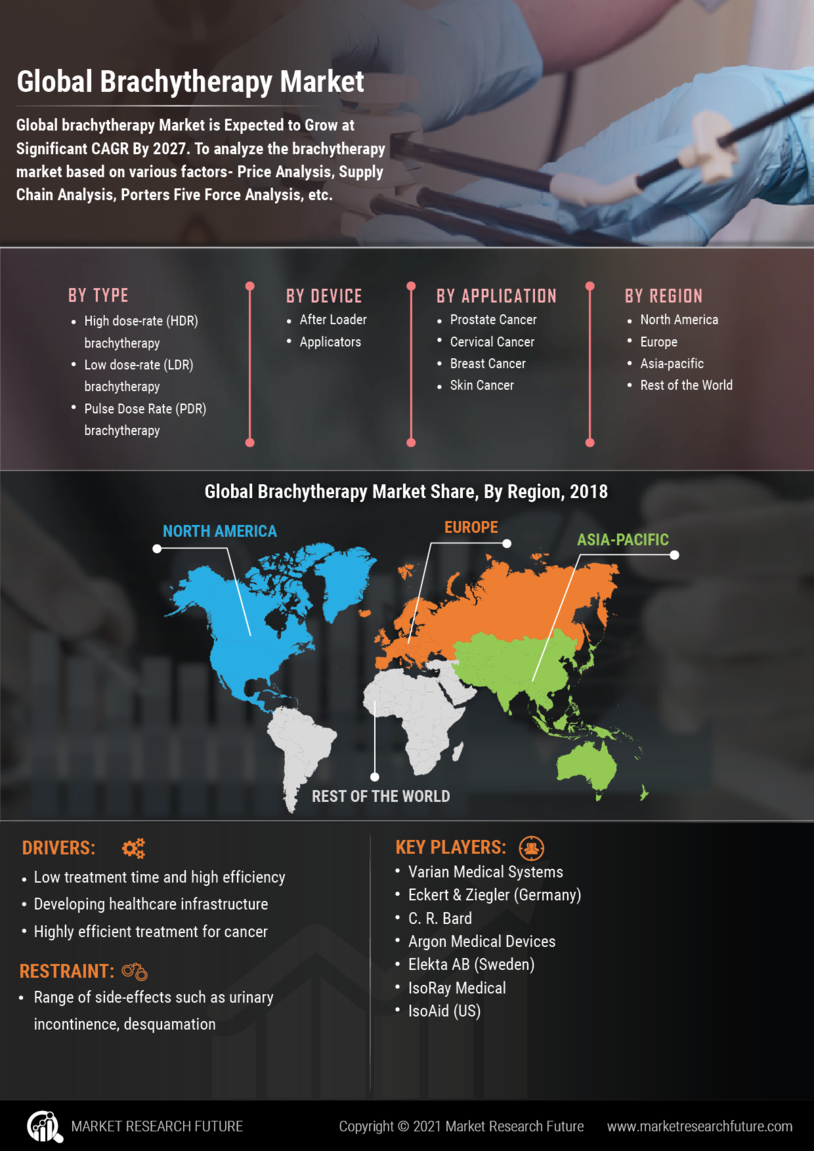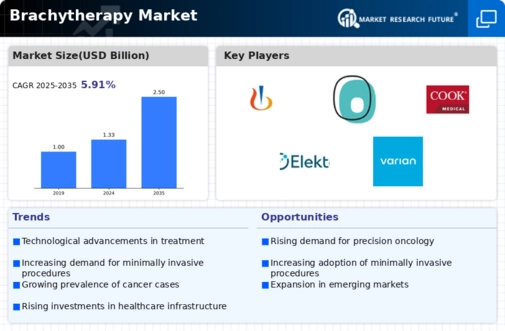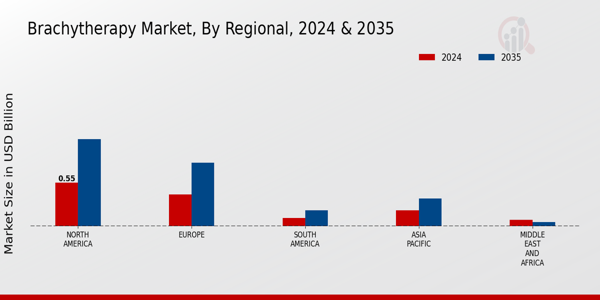Market Growth Projections
The Global Brachytherapy Market Industry is poised for substantial growth, with projections indicating a market value of 1.33 USD Billion in 2024 and an anticipated increase to 2.5 USD Billion by 2035. This growth trajectory suggests a compound annual growth rate of 5.91% from 2025 to 2035. Such figures highlight the increasing adoption of brachytherapy as a preferred treatment modality for various cancers. The market's expansion is likely driven by technological advancements, rising cancer incidence, and supportive healthcare policies, positioning brachytherapy as a critical component of modern oncology.
Rising Geriatric Population
The rising geriatric population worldwide is a significant driver for the Global Brachytherapy Market Industry. As individuals age, the incidence of cancer tends to increase, necessitating effective treatment options. Brachytherapy, with its minimally invasive nature and targeted approach, is particularly suitable for older patients who may have comorbidities. The demographic shift towards an older population is expected to enhance the demand for brachytherapy services. This trend aligns with the overall growth of the market, which is projected to reach 2.5 USD Billion by 2035, reflecting the increasing need for tailored cancer treatments for the aging population.
Increasing Incidence of Cancer
The rising incidence of cancer globally serves as a primary driver for the Global Brachytherapy Market Industry. With cancer cases projected to escalate, the demand for effective treatment modalities is paramount. Brachytherapy, known for its targeted approach, offers a viable solution for various cancers, including prostate and cervical cancer. In 2024, the market is valued at 1.33 USD Billion, reflecting the growing reliance on this treatment method. As healthcare systems worldwide adapt to the increasing burden of cancer, the Global Brachytherapy Market Industry is likely to expand, providing innovative therapies to improve patient outcomes.
Supportive Government Policies and Funding
Supportive government policies and funding initiatives play a crucial role in the growth of the Global Brachytherapy Market Industry. Many governments are recognizing the importance of cancer treatment and are allocating resources to enhance healthcare infrastructure. This includes funding for research and development in brachytherapy technologies, which can lead to improved treatment options. As public health initiatives promote early detection and treatment of cancer, the demand for brachytherapy is expected to increase. Such support may facilitate market growth, ensuring that the Global Brachytherapy Market Industry remains at the forefront of cancer care.
Technological Advancements in Brachytherapy
Technological innovations in brachytherapy equipment and techniques are significantly influencing the Global Brachytherapy Market Industry. Advances such as high-dose-rate brachytherapy and image-guided techniques enhance treatment precision and patient safety. These innovations not only improve clinical outcomes but also increase the efficiency of treatment delivery. As hospitals and clinics invest in state-of-the-art technology, the market is expected to grow. The anticipated growth trajectory suggests that by 2035, the market could reach 2.5 USD Billion, driven by these advancements that cater to the evolving needs of healthcare providers and patients alike.
Growing Awareness and Acceptance of Brachytherapy
The increasing awareness and acceptance of brachytherapy among healthcare professionals and patients contribute to the expansion of the Global Brachytherapy Market Industry. Educational initiatives and clinical evidence supporting the efficacy of brachytherapy are fostering a positive perception of this treatment option. As more patients seek information about their treatment choices, the demand for brachytherapy is likely to rise. This trend is reflected in the projected compound annual growth rate of 5.91% from 2025 to 2035, indicating a robust future for the Global Brachytherapy Market Industry as it becomes a preferred choice for cancer treatment.







